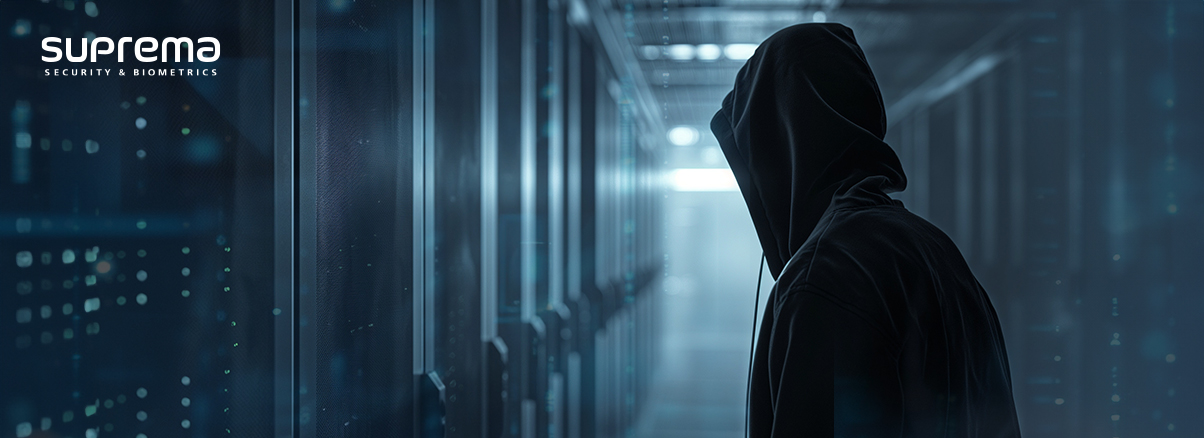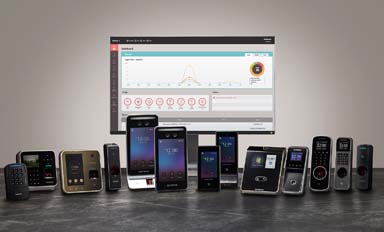- Latest press releases from Suprema

Securing data centers against insider threats has become a critical concern, as data breaches and security threats not only originate externally but are increasingly perpetuated from within. Modern access control solutions have significantly evolved, incorporating sophisticated technologies designed to address and mitigate these risks.
By leveraging advanced biometric systems, continuous authentication, and behavioral analytics, these solutions enhance the security framework of data centers, ensuring that only authorized personnel can access sensitive data and infrastructure.
The evolution of access control technologies
Traditionally, access control systems have relied on methods like key cards and PINs to secure entry to physical and digital spaces. However, these measures often fall short when it comes to preventing insider threats. Modern technologies have revolutionized this landscape through the integration of biometric verification and role-based access controls.
Biometric integration and role-based authorization
Biometrics technology, which includes fingerprint and facial recognition systems, ensures that access is granted based on physical traits, which are nearly impossible to replicate or forge. This method significantly reduces the risk of unauthorized access by insiders who might otherwise acquire traditional forms of entry credentials.
When coupled with role-based authorization, which tailors access privileges to the specific roles and responsibilities of individual employees, a more secure environment is created. This dual approach not only restricts entry to sensitive areas but also enforces the principle of least privilege, ensuring that employees have access only to the information necessary for their job functions.
“In access control, integrating biometrics and role-based authorization significantly enhances security against insider threats,” said Hanchul Kim, CEO of Suprema. “Utilizing biometric technologies for both physical entry and system access ensures that only authorized personnel can gain entry. Combining this with role-based authorization, which assigns access levels based on specific roles and responsibilities, creates a robust security framework.”
This approach not only restricts access to sensitive areas and data but also enforces the principle of least privilege, ensuring that employees can only access the information necessary for their job functions. Together, these strategies form a multi-layered defense that mitigates the risk of unauthorized access and maintains the integrity of critical systems and data.
Continuous authentication and behavioral analytics
To further bolster security measures, some companies have implemented continuous authentication systems. These systems continuously verify the identity of individuals as they interact with data center resources, rather than relying on a single point of entry check. This method ensures that any anomaly or deviation from normal behavior is detected in real-time, thereby preventing potential security breaches from unfolding.
Furthermore, behavioral analytics are now being employed to monitor and analyze user behavior continuously. These systems use algorithms to detect unusual patterns in access and usage, which could indicate a potential insider threat. By integrating inputs from various departments like HR and Finance, these tools can assign risk scores to individual cardholders, flagging any suspicious activity for further investigation.
“Some companies have developed analytics or Business Intelligence tools to detect and report abnormal behavior and card activity to detect potential insider threats,” said Gaoping Xiao, Director of Sales for APAC at AMAG Technology. “The algorithm can determine a cardholder’s risk score based on the card activities, the profile of the cardholder, and other factors like input from HR or Finance etc.”
Implementing modern access control systems
The adoption of these advanced access control measures requires careful planning and implementation. Data centers must assess their current security posture, identify potential vulnerabilities, and determine the appropriate technologies that align with their specific security needs.
This involves not only the integration of new technologies but also training personnel to understand and effectively manage these systems.
Best practices for effective implementation
Comprehensive risk assessment: Before implementing new access control technologies, it is crucial to conduct a thorough risk assessment. This helps in identifying specific areas where insider threats could potentially arise and tailoring the access control solutions to address these risks.
Interdepartmental collaboration: Collaboration between security, IT, HR, and other relevant departments ensures that all aspects of insider threats are comprehensively addressed. By sharing information and insights, organizations can better identify potential threats and respond more effectively.
Continuous monitoring and evaluation: The effectiveness of access control systems should be continuously monitored and evaluated to ensure they are functioning as intended. Regular audits and updates to the system as technologies evolve are also crucial to maintain a high level of security.
Conclusion
As data centers continue to be prime targets for insider threats, the importance of sophisticated access control systems cannot be overstated.
By integrating biometric technologies, continuous authentication, and behavioral analytics, organizations can create a robust security framework that not only prevents unauthorized access but also ensures the integrity and confidentiality of critical data.
As we move forward, these technologies will play an increasingly vital role in protecting the assets that drive our digital world.
Source: asmag.com











